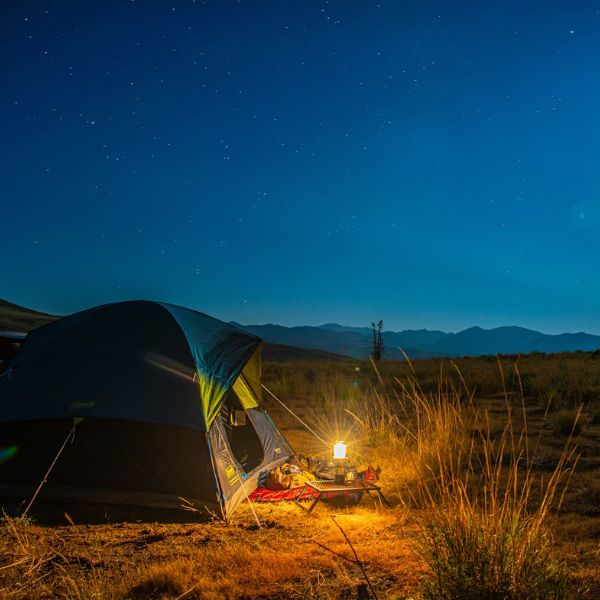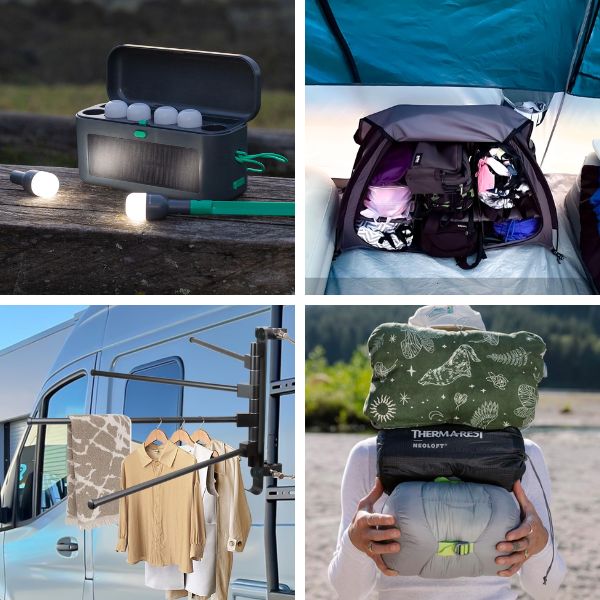Free Shipping

Pay No Sales Tax
30-Month Warranty
FREE SHIPPING
PAY NO SALES TAX

Free Shipping

Pay No Sales Tax
30-Month Warranty
The LiT List
Glamping & Camping Ideas + Resources
7 min read
Perfect for long-term camping in the backcountry, a wall tent offers a comfortable stay through every season. But when staying in the wilderness, especially for stretches of time, it’s important to preserve and respect your environment. While most nature-loving folks are familiar with the Leave No Trace principles, wall tent campers should be extra mindful of their tent’s size and other extra creature comfort-like amenities that make the tent your home away from home.
In this helpful guide, we break down the principles for Leave No Trace (LNT) camping along with specific steps and best practices for wall tent users to abide by to ensure your impact on the area is as minimal as it can be!
If you’re unfamiliar with the seven Leave No Trace principles, let us first explain what they’re all about. The Leave No Trace (LNT) principles are seven guidelines created to help protect the environment on small and broad scales.
Here are the LNT principles:
It’s important to note that, while the LNT principles offer broad guidelines, outdoor visitors should take the initiative to understand each environment and apply the principles as suited.
This goes for everyone. Whether visiting for hiking, picnicking, sightseeing, or backpacking, practicing LNT principles will ensure you leave the space – and nature – as intended.

Practicing all seven LNT principles is especially important when camping. After all, you’re settling in for a weekend or maybe a week, so it’s critical to be mindful of your environmental impact.
And this goes for all types of camping! Hammock camping, tent camping, stealth backpack camping – anything! It even applies to glamping. As eco-friendly as their canvas material can be, bell tents and shelter tents must still follow the LNT principles, even more so due to their semi-permanent structure, sizable footprint, and extra amenities carried along when you intend to go long-term camping for months at a time.
So if you’re a wall tent user, be a responsible steward of the environment by following the LNT principles. Read on to discover the best practices on how to do so.
To help understand the best practices suited for wall tent camping, we’ve broken down this guide to reflect the 7 Leave No Trace principles.
Ready? Here we go!
Before any camping trip, you must plan and prepare. Understanding your destination, the regional weather, and the daily forecast ensures you minimize risks. It also allows you to pack the appropriate gear needed for your excursion. But for wall tent camping, there are a few specific steps to take to ensure a low impact.
The main objective of this LNT principle is to minimize your impact on land, foliage, and waterways. When it comes to setting up and managing a site with a wall tent, here are some guidelines.

“Pack it in, pack it out” – it’s a pretty good mantra to live by whenever you visit nature. Toilet paper, trash, food scraps – pack out all of it! However, following the mantra is easy at campgrounds, but not so easy when pitching a wall tent in the backcountry. So what should you do?
Leave everything as you found it – if not better! A wall tent can leave a large footprint, so when breaking down camp, take extra care to restore the site to its natural state.

The basic steps for this LNT principle are to use established fire rings, keep campfires small, and burn wood completely to ash, packing it out when you can. Your fire should be completely extinguished, leaving no chance of a spark! Here are the best practices for wall tent users:
Encountering wildlife at your campsite is inevitable. But it’s important to remember you’re in their territory and observe from a distance. Here are more ways to be respectful of their home turf.
Lastly, be considerate of other visitors, including neighboring campsites, property owners, or wherever you plan to set up your wall tent. Here’s what this means:

Wall tents make comfortable and sturdy four-season tents and are ideal for long-term camping, especially with their spaciousness and ability to add extra amenities like woodburning stoves. All-in-all, there’s a lot to appreciate and enjoy about wall tent camping.
Still, these heavy-duty outfitter tents come with great responsibility. So before setting off on another adventure into the wilderness or backcountry, take time to review these 7 Leave No Trace principles. Proper preparation, planning, and maintenance of your wall tent and surrounding campsite will ensure you leave as little trace as possible to the environment.
Comments will be approved before showing up.

THE LIT LIST 5 min read
In search of the perfect camping lantern? Here are some top features to look for, from rechargeable battery and solar to dimmable LED brightness settings and more.

THE LIT LIST 7 min read
Elevate your outdoor experience with the right camping tent accessories.
Camping Gift Ideas for People Who Have Everything
The Best Portable Tent Heaters - Ways To Heat A Canvas Tent
Glamping in Northern California: 8 Luxury Sites
Waterproofing A Canvas Tent - Retreating Canvas
33 Camping Quotes to Inspire Your Next Adventure
What Is Glamping? Origins, Definition, Destinations & More
10 Tips for Staying Warm While Winter Camping
How to Maintain and Clean a Bell Tent
Essential Family Camping Checklist: What to Pack [PRINTABLE]
Backyard Glamping Checklist for an Unforgettable DIY Glampsite
Sign up to get the latest on sales, new releases and tips
We’ll periodically share inspiration, bell tent releases, special offers, and event notifications with ya.